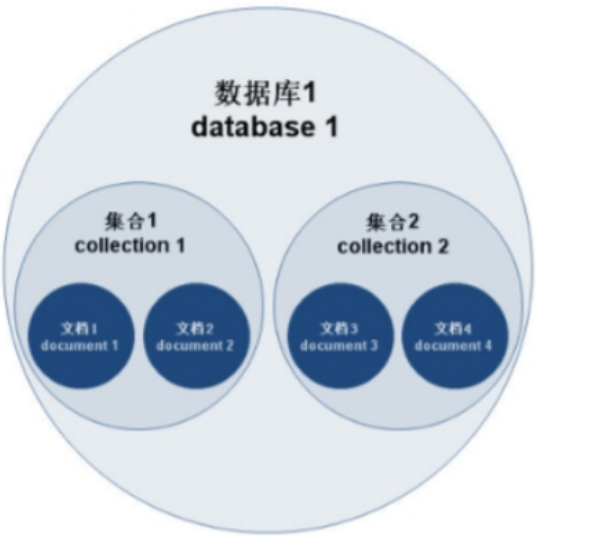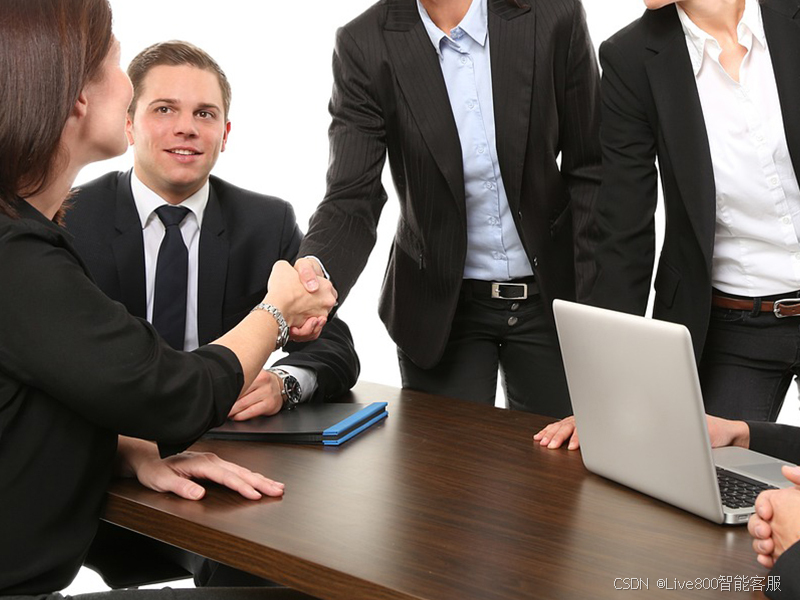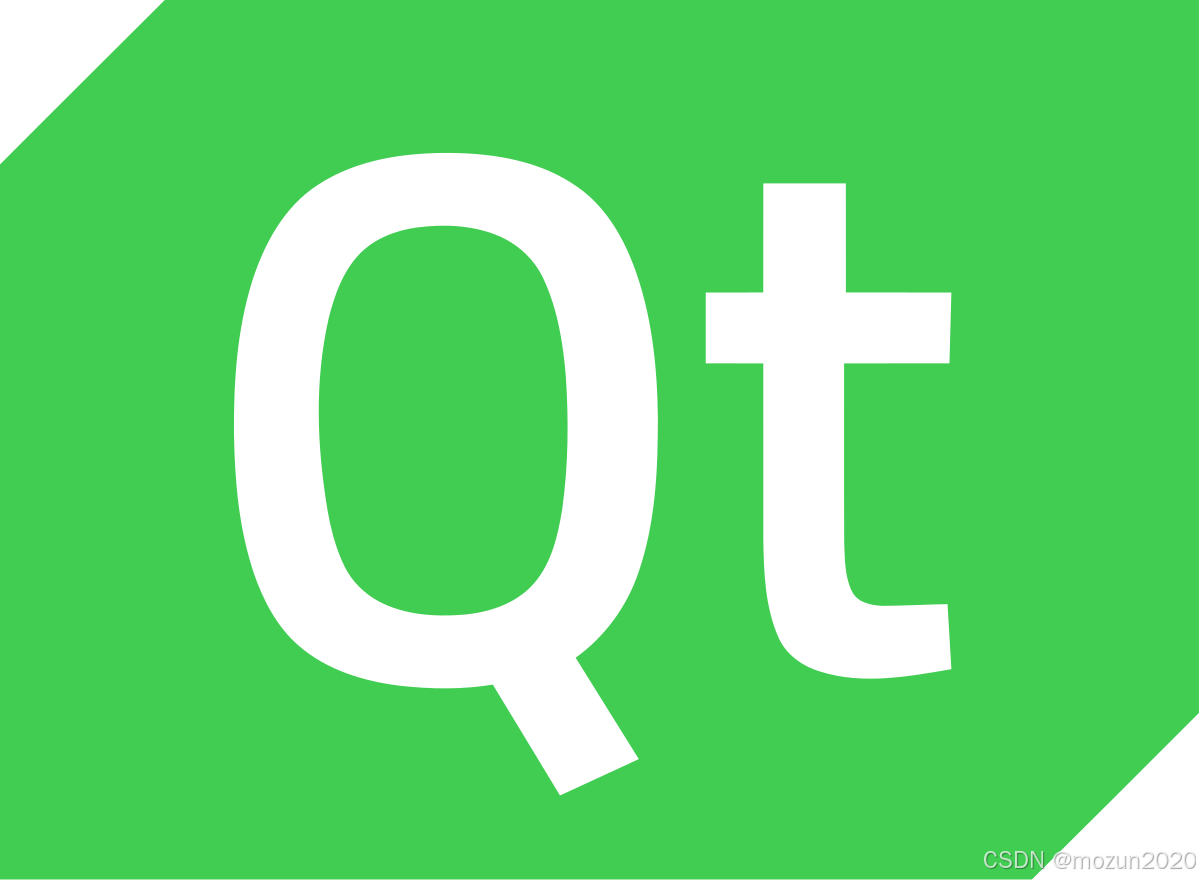yolov8x-p2 实现 tensorrt 推理
简述
在最开始的yolov8提供的不同size的版本,包括n、s、m、l、x(模型规模依次增大,通过depth, width, max_channels控制大小),这些都是通过P3、P4和P5提取图片特征;
正常的yolov8对象检测模型输出层是P3、P4、P5三个输出层,为了提升对小目标的检测能力,新版本的yolov8 已经包含了P2层(P2层做的卷积次数少,特征图的尺寸(分辨率)较大,更加利于小目标识别),有四个输出层。Backbone部分的结果没有改变,但是Neck跟Head部分模型结构做了调整。

yolov8-p2 yaml
# Ultralytics YOLO 🚀, AGPL-3.0 license
# YOLOv8 object detection model with P2-P5 outputs. For Usage examples see https://docs.ultralytics.com/tasks/detect# Parameters
nc: 80 # number of classes
scales: # model compound scaling constants, i.e. 'model=yolov8n.yaml' will call yolov8.yaml with scale 'n'# [depth, width, max_channels]n: [0.33, 0.25, 1024]s: [0.33, 0.50, 1024]m: [0.67, 0.75, 768]l: [1.00, 1.00, 512]x: [1.00, 1.25, 512]# YOLOv8.0 backbone
backbone:# [from, repeats, module, args]- [-1, 1, Conv, [64, 3, 2]] # 0-P1/2- [-1, 1, Conv, [128, 3, 2]] # 1-P2/4- [-1, 3, C2f, [128, True]]- [-1, 1, Conv, [256, 3, 2]] # 3-P3/8- [-1, 6, C2f, [256, True]]- [-1, 1, Conv, [512, 3, 2]] # 5-P4/16- [-1, 6, C2f, [512, True]]- [-1, 1, Conv, [1024, 3, 2]] # 7-P5/32- [-1, 3, C2f, [1024, True]]- [-1, 1, SPPF, [1024, 5]] # 9# YOLOv8.0-p2 head
head:- [-1, 1, nn.Upsample, [None, 2, 'nearest']]- [[-1, 6], 1, Concat, [1]] # cat backbone P4- [-1, 3, C2f, [512]] # 12- [-1, 1, nn.Upsample, [None, 2, 'nearest']]- [[-1, 4], 1, Concat, [1]] # cat backbone P3- [-1, 3, C2f, [256]] # 15 (P3/8-small)- [-1, 1, nn.Upsample, [None, 2, 'nearest']]- [[-1, 2], 1, Concat, [1]] # cat backbone P2- [-1, 3, C2f, [128]] # 18 (P2/4-xsmall)- [-1, 1, Conv, [128, 3, 2]]- [[-1, 15], 1, Concat, [1]] # cat head P3- [-1, 3, C2f, [256]] # 21 (P3/8-small)- [-1, 1, Conv, [256, 3, 2]]- [[-1, 12], 1, Concat, [1]] # cat head P4- [-1, 3, C2f, [512]] # 24 (P4/16-medium)- [-1, 1, Conv, [512, 3, 2]]- [[-1, 9], 1, Concat, [1]] # cat head P5- [-1, 3, C2f, [1024]] # 27 (P5/32-large)- [[18, 21, 24, 27], 1, Detect, [nc]] # Detect(P2, P3, P4, P5)
yolov8-p2 tensort 实现
参考: https://github.com/wang-xinyu/tensorrtx/tree/master/yolov8
-
model.cpp中增加buildEngineYolov8x_p2方法.Backbone
-
backbone 和 yolov8 一样 , 无需改动,照搬下来就行.
/************************************************************************************************************************************************ YOLOV8 BACKBONE ***************************************************************************************************************************************************/nvinfer1::IElementWiseLayer *conv0 = convBnSiLU(network, weightMap, *data, 80, 3, 2, 1, "model.0");nvinfer1::IElementWiseLayer *conv1 = convBnSiLU(network, weightMap, *conv0->getOutput(0), 160, 3, 2, 1, "model.1");nvinfer1::IElementWiseLayer *conv2 = C2F(network, weightMap, *conv1->getOutput(0), 160, 160, 3, true, 0.5, "model.2");nvinfer1::IElementWiseLayer *conv3 = convBnSiLU(network, weightMap, *conv2->getOutput(0), 320, 3, 2, 1, "model.3");nvinfer1::IElementWiseLayer *conv4 = C2F(network, weightMap, *conv3->getOutput(0), 320, 320, 6, true, 0.5, "model.4");nvinfer1::IElementWiseLayer *conv5 = convBnSiLU(network, weightMap, *conv4->getOutput(0), 640, 3, 2, 1, "model.5");nvinfer1::IElementWiseLayer *conv6 = C2F(network, weightMap, *conv5->getOutput(0), 640, 640, 6, true, 0.5, "model.6");nvinfer1::IElementWiseLayer *conv7 = convBnSiLU(network, weightMap, *conv6->getOutput(0), 640, 3, 2, 1, "model.7");nvinfer1::IElementWiseLayer *conv8 = C2F(network, weightMap, *conv7->getOutput(0), 640, 640, 3, true, 0.5, "model.8");nvinfer1::IElementWiseLayer *conv9 = SPPF(network, weightMap, *conv8->getOutput(0), 640, 640, 5, "model.9");
Head
-
由3个输出层 (P3、P4、P5) 变成4个输出层 (P2、P3、P4、P5)
HEAD
/************************************************************************************************************************************************* YOLOV8 HEAD ******************************************************************************************************************************************************/float scale[] = {1.0, 2.0, 2.0};nvinfer1::IResizeLayer *upsample10 = network->addResize(*conv9->getOutput(0));upsample10->setResizeMode(nvinfer1::ResizeMode::kNEAREST);upsample10->setScales(scale, 3);nvinfer1::ITensor *inputTensor11[] = {upsample10->getOutput(0), conv6->getOutput(0)};nvinfer1::IConcatenationLayer *cat11 = network->addConcatenation(inputTensor11, 2);nvinfer1::IElementWiseLayer *conv12 = C2F(network, weightMap, *cat11->getOutput(0), 640, 640, 3, false, 0.5, "model.12");nvinfer1::IResizeLayer *upsample13 = network->addResize(*conv12->getOutput(0));upsample13->setResizeMode(nvinfer1::ResizeMode::kNEAREST);upsample13->setScales(scale, 3);nvinfer1::ITensor *inputTensor14[] = {upsample13->getOutput(0), conv4->getOutput(0)};nvinfer1::IConcatenationLayer *cat14 = network->addConcatenation(inputTensor14, 2);nvinfer1::IElementWiseLayer *conv15 = C2F(network, weightMap, *cat14->getOutput(0), 320, 320, 3, false, 0.5, "model.15");nvinfer1::IResizeLayer *upsample16 = network->addResize(*conv15->getOutput(0));upsample16->setResizeMode(nvinfer1::ResizeMode::kNEAREST);upsample16->setScales(scale, 3);nvinfer1::ITensor *inputTensor17[] = {upsample16->getOutput(0), conv2->getOutput(0)};nvinfer1::IConcatenationLayer *cat17 = network->addConcatenation(inputTensor17, 2);nvinfer1::IElementWiseLayer *conv18 = C2F(network, weightMap, *cat17->getOutput(0), 160, 160, 3, false, 0.5, "model.18");nvinfer1::IElementWiseLayer *conv19 = convBnSiLU(network, weightMap, *conv18->getOutput(0), 160, 3, 2, 1, "model.19");nvinfer1::ITensor *inputTensor20[] = {conv19->getOutput(0), conv15->getOutput(0)};nvinfer1::IConcatenationLayer *cat20 = network->addConcatenation(inputTensor20, 2);nvinfer1::IElementWiseLayer *conv21 = C2F(network, weightMap, *cat20->getOutput(0), 320, 320, 3, false, 0.5, "model.21");nvinfer1::IElementWiseLayer *conv22 = convBnSiLU(network, weightMap, *conv21->getOutput(0), 320, 3, 2, 1, "model.22");nvinfer1::ITensor *inputTensor23[] = {conv22->getOutput(0), conv12->getOutput(0)};nvinfer1::IConcatenationLayer *cat23 = network->addConcatenation(inputTensor23, 2);nvinfer1::IElementWiseLayer *conv24 = C2F(network, weightMap, *cat23->getOutput(0), 640, 640, 3, false, 0.5, "model.24");nvinfer1::IElementWiseLayer *conv25 = convBnSiLU(network, weightMap, *conv24->getOutput(0), 640, 3, 2, 1, "model.25");nvinfer1::ITensor *inputTensor26[] = {conv25->getOutput(0), conv9->getOutput(0)};nvinfer1::IConcatenationLayer *cat26 = network->addConcatenation(inputTensor26, 2);nvinfer1::IElementWiseLayer *conv27 = C2F(network, weightMap, *cat26->getOutput(0), 640, 640, 3, false, 0.5, "model.27");OUTPUT
/**************************************************************************************************************************************************** YOLOV8 OUTPUT *************************************************************************************************************************************************/// output0nvinfer1::IElementWiseLayer *conv28_cv2_0_0 = convBnSiLU(network, weightMap, *conv18->getOutput(0), 64, 3, 1, 1, "model.28.cv2.0.0");nvinfer1::IElementWiseLayer *conv28_cv2_0_1 = convBnSiLU(network, weightMap, *conv28_cv2_0_0->getOutput(0), 64, 3, 1, 1, "model.28.cv2.0.1");nvinfer1::IConvolutionLayer *conv28_cv2_0_2 = network->addConvolutionNd(*conv28_cv2_0_1->getOutput(0), 64, nvinfer1::DimsHW{1, 1}, weightMap["model.28.cv2.0.2.weight"], weightMap["model.28.cv2.0.2.bias"]);conv28_cv2_0_2->setStrideNd(nvinfer1::DimsHW{1, 1});conv28_cv2_0_2->setPaddingNd(nvinfer1::DimsHW{0, 0});nvinfer1::IElementWiseLayer *conv28_cv3_0_0 = convBnSiLU(network, weightMap, *conv18->getOutput(0), 160, 3, 1, 1, "model.28.cv3.0.0");nvinfer1::IElementWiseLayer *conv28_cv3_0_1 = convBnSiLU(network, weightMap, *conv28_cv3_0_0->getOutput(0), 160, 3, 1, 1, "model.28.cv3.0.1");nvinfer1::IConvolutionLayer *conv28_cv3_0_2 = network->addConvolutionNd(*conv28_cv3_0_1->getOutput(0), kNumClass, nvinfer1::DimsHW{1, 1}, weightMap["model.28.cv3.0.2.weight"], weightMap["model.28.cv3.0.2.bias"]);conv28_cv3_0_2->setStride(nvinfer1::DimsHW{1, 1});conv28_cv3_0_2->setPadding(nvinfer1::DimsHW{0, 0});nvinfer1::ITensor *inputTensor28_0[] = {conv28_cv2_0_2->getOutput(0), conv28_cv3_0_2->getOutput(0)};nvinfer1::IConcatenationLayer *cat28_0 = network->addConcatenation(inputTensor28_0, 2); // P2// output1nvinfer1::IElementWiseLayer *conv28_cv2_1_0 = convBnSiLU(network, weightMap, *conv21->getOutput(0), 64, 3, 1, 1, "model.28.cv2.1.0");nvinfer1::IElementWiseLayer *conv28_cv2_1_1 = convBnSiLU(network, weightMap, *conv28_cv2_1_0->getOutput(0), 64, 3, 1, 1, "model.28.cv2.1.1");nvinfer1::IConvolutionLayer *conv28_cv2_1_2 = network->addConvolutionNd(*conv28_cv2_1_1->getOutput(0), 64, nvinfer1::DimsHW{1, 1}, weightMap["model.28.cv2.1.2.weight"], weightMap["model.28.cv2.1.2.bias"]);conv28_cv2_1_2->setStrideNd(nvinfer1::DimsHW{1, 1});conv28_cv2_1_2->setPaddingNd(nvinfer1::DimsHW{0, 0});nvinfer1::IElementWiseLayer *conv28_cv3_1_0 = convBnSiLU(network, weightMap, *conv21->getOutput(0), 160, 3, 1, 1, "model.28.cv3.1.0");nvinfer1::IElementWiseLayer *conv28_cv3_1_1 = convBnSiLU(network, weightMap, *conv28_cv3_1_0->getOutput(0), 160, 3, 1, 1, "model.28.cv3.1.1");nvinfer1::IConvolutionLayer *conv28_cv3_1_2 = network->addConvolutionNd(*conv28_cv3_1_1->getOutput(0), kNumClass, nvinfer1::DimsHW{1, 1}, weightMap["model.28.cv3.1.2.weight"], weightMap["model.28.cv3.1.2.bias"]);conv28_cv3_1_2->setStrideNd(nvinfer1::DimsHW{1, 1});conv28_cv3_1_2->setPaddingNd(nvinfer1::DimsHW{0, 0});nvinfer1::ITensor *inputTensor28_1[] = {conv28_cv2_1_2->getOutput(0), conv28_cv3_1_2->getOutput(0)};nvinfer1::IConcatenationLayer *cat28_1 = network->addConcatenation(inputTensor28_1, 2);// output2nvinfer1::IElementWiseLayer *conv28_cv2_2_0 = convBnSiLU(network, weightMap, *conv24->getOutput(0), 64, 3, 1, 1, "model.28.cv2.2.0");nvinfer1::IElementWiseLayer *conv28_cv2_2_1 = convBnSiLU(network, weightMap, *conv28_cv2_2_0->getOutput(0), 64, 3, 1, 1, "model.28.cv2.2.1");nvinfer1::IConvolutionLayer *conv28_cv2_2_2 = network->addConvolution(*conv28_cv2_2_1->getOutput(0), 64, nvinfer1::DimsHW{1, 1}, weightMap["model.28.cv2.2.2.weight"], weightMap["model.28.cv2.2.2.bias"]);nvinfer1::IElementWiseLayer *conv28_cv3_2_0 = convBnSiLU(network, weightMap, *conv24->getOutput(0), 160, 3, 1, 1, "model.28.cv3.2.0");nvinfer1::IElementWiseLayer *conv28_cv3_2_1 = convBnSiLU(network, weightMap, *conv28_cv3_2_0->getOutput(0), 160, 3, 1, 1, "model.28.cv3.2.1");nvinfer1::IConvolutionLayer *conv28_cv3_2_2 = network->addConvolution(*conv28_cv3_2_1->getOutput(0), kNumClass, nvinfer1::DimsHW{1, 1}, weightMap["model.28.cv3.2.2.weight"], weightMap["model.28.cv3.2.2.bias"]);nvinfer1::ITensor *inputTensor28_2[] = {conv28_cv2_2_2->getOutput(0), conv28_cv3_2_2->getOutput(0)};nvinfer1::IConcatenationLayer *cat28_2 = network->addConcatenation(inputTensor28_2, 2);// output3nvinfer1::IElementWiseLayer *conv28_cv2_3_0 = convBnSiLU(network, weightMap, *conv27->getOutput(0), 64, 3, 1, 1, "model.28.cv2.3.0");nvinfer1::IElementWiseLayer *conv28_cv2_3_1 = convBnSiLU(network, weightMap, *conv28_cv2_3_0->getOutput(0), 64, 3, 1, 1, "model.28.cv2.3.1");nvinfer1::IConvolutionLayer *conv28_cv2_3_2 = network->addConvolution(*conv28_cv2_3_1->getOutput(0), 64, nvinfer1::DimsHW{1, 1}, weightMap["model.28.cv2.3.2.weight"], weightMap["model.28.cv2.3.2.bias"]);nvinfer1::IElementWiseLayer *conv28_cv3_3_0 = convBnSiLU(network, weightMap, *conv27->getOutput(0), 160, 3, 1, 1, "model.28.cv3.3.0");nvinfer1::IElementWiseLayer *conv28_cv3_3_1 = convBnSiLU(network, weightMap, *conv28_cv3_3_0->getOutput(0), 160, 3, 1, 1, "model.28.cv3.3.1");nvinfer1::IConvolutionLayer *conv28_cv3_3_2 = network->addConvolution(*conv28_cv3_3_1->getOutput(0), kNumClass, nvinfer1::DimsHW{1, 1}, weightMap["model.28.cv3.3.2.weight"], weightMap["model.28.cv3.3.2.bias"]);nvinfer1::ITensor *inputTensor28_3[] = {conv28_cv2_3_2->getOutput(0), conv28_cv3_3_2->getOutput(0)};nvinfer1::IConcatenationLayer *cat28_3 = network->addConcatenation(inputTensor28_3, 2);DETECT
/**************************************************************************************************************************************************** YOLOV8 DETECT *************************************************************************************************************************************************/// P2nvinfer1::IShuffleLayer *shuffle28_0 = network->addShuffle(*cat28_0->getOutput(0));shuffle28_0->setReshapeDimensions(nvinfer1::Dims2{64 + kNumClass, (kInputH / 4) * (kInputW / 4)});nvinfer1::ISliceLayer *split28_0_0 = network->addSlice(*shuffle28_0->getOutput(0), nvinfer1::Dims2{0, 0}, nvinfer1::Dims2{64, (kInputH / 4) * (kInputW / 4)}, nvinfer1::Dims2{1, 1});nvinfer1::ISliceLayer *split28_0_1 = network->addSlice(*shuffle28_0->getOutput(0), nvinfer1::Dims2{64, 0}, nvinfer1::Dims2{kNumClass, (kInputH / 4) * (kInputW / 4)}, nvinfer1::Dims2{1, 1});nvinfer1::IShuffleLayer *dfl28_0 = DFL(network, weightMap, *split28_0_0->getOutput(0), 4, (kInputH / 4) * (kInputW / 4), 1, 1, 0, "model.28.dfl.conv.weight");nvinfer1::ITensor *inputTensor28_dfl_0[] = {dfl28_0->getOutput(0), split28_0_1->getOutput(0)};nvinfer1::IConcatenationLayer *cat28_dfl_0 = network->addConcatenation(inputTensor28_dfl_0, 2);// P3nvinfer1::IShuffleLayer *shuffle28_1 = network->addShuffle(*cat28_1->getOutput(0));shuffle28_1->setReshapeDimensions(nvinfer1::Dims2{64 + kNumClass, (kInputH / 8) * (kInputW / 8)});nvinfer1::ISliceLayer *split28_1_0 = network->addSlice(*shuffle28_1->getOutput(0), nvinfer1::Dims2{0, 0}, nvinfer1::Dims2{64, (kInputH / 8) * (kInputW / 8)}, nvinfer1::Dims2{1, 1});nvinfer1::ISliceLayer *split28_1_1 = network->addSlice(*shuffle28_1->getOutput(0), nvinfer1::Dims2{64, 0}, nvinfer1::Dims2{kNumClass, (kInputH / 8) * (kInputW / 8)}, nvinfer1::Dims2{1, 1});nvinfer1::IShuffleLayer *dfl28_1 = DFL(network, weightMap, *split28_1_0->getOutput(0), 4, (kInputH / 8) * (kInputW / 8), 1, 1, 0, "model.28.dfl.conv.weight");nvinfer1::ITensor *inputTensor28_dfl_1[] = {dfl28_1->getOutput(0), split28_1_1->getOutput(0)};nvinfer1::IConcatenationLayer *cat28_dfl_1 = network->addConcatenation(inputTensor28_dfl_1, 2);// P4nvinfer1::IShuffleLayer *shuffle28_2 = network->addShuffle(*cat28_2->getOutput(0));shuffle28_2->setReshapeDimensions(nvinfer1::Dims2{64 + kNumClass, (kInputH / 16) * (kInputW / 16)});nvinfer1::ISliceLayer *split28_2_0 = network->addSlice(*shuffle28_2->getOutput(0), nvinfer1::Dims2{0, 0}, nvinfer1::Dims2{64, (kInputH / 16) * (kInputW / 16)}, nvinfer1::Dims2{1, 1});nvinfer1::ISliceLayer *split28_2_1 = network->addSlice(*shuffle28_2->getOutput(0), nvinfer1::Dims2{64, 0}, nvinfer1::Dims2{kNumClass, (kInputH / 16) * (kInputW / 16)}, nvinfer1::Dims2{1, 1});nvinfer1::IShuffleLayer *dfl28_2 = DFL(network, weightMap, *split28_2_0->getOutput(0), 4, (kInputH / 16) * (kInputW / 16), 1, 1, 0, "model.28.dfl.conv.weight");nvinfer1::ITensor *inputTensor28_dfl_2[] = {dfl28_2->getOutput(0), split28_2_1->getOutput(0)};nvinfer1::IConcatenationLayer *cat28_dfl_2 = network->addConcatenation(inputTensor28_dfl_2, 2);// P5nvinfer1::IShuffleLayer *shuffle28_3 = network->addShuffle(*cat28_3->getOutput(0));shuffle28_3->setReshapeDimensions(nvinfer1::Dims2{64 + kNumClass, (kInputH / 32) * (kInputW / 32)});nvinfer1::ISliceLayer *split28_3_0 = network->addSlice(*shuffle28_3->getOutput(0), nvinfer1::Dims2{0, 0}, nvinfer1::Dims2{64, (kInputH / 32) * (kInputW / 32)}, nvinfer1::Dims2{1, 1});nvinfer1::ISliceLayer *split28_3_1 = network->addSlice(*shuffle28_3->getOutput(0), nvinfer1::Dims2{64, 0}, nvinfer1::Dims2{kNumClass, (kInputH / 32) * (kInputW / 32)}, nvinfer1::Dims2{1, 1});nvinfer1::IShuffleLayer *dfl28_3 = DFL(network, weightMap, *split28_3_0->getOutput(0), 4, (kInputH / 32) * (kInputW / 32), 1, 1, 0, "model.28.dfl.conv.weight");nvinfer1::ITensor *inputTensor28_dfl_3[] = {dfl28_3->getOutput(0), split28_3_1->getOutput(0)};nvinfer1::IConcatenationLayer *cat28_dfl_3 = network->addConcatenation(inputTensor28_dfl_3, 2);nvinfer1::IPluginV2Layer *yolo = addYoLoLayer(network, std::vector<nvinfer1::IConcatenationLayer *>{cat28_dfl_0, cat28_dfl_1, cat28_dfl_2, cat28_dfl_3});yolo->getOutput(0)->setName(kOutputTensorName);network->markOutput(*yolo->getOutput(0));
-
-
修改
yololayer.cu中forwardGpu方法void YoloLayerPlugin::forwardGpu(const float *const *inputs, float *output, cudaStream_t stream, int mYoloV8netHeight, int mYoloV8NetWidth, int batchSize) {int outputElem = 1 + mMaxOutObject * sizeof(Detection) / sizeof(float);cudaMemsetAsync(output, 0, sizeof(float), stream);for (int idx = 0; idx < batchSize; ++idx){CUDA_CHECK(cudaMemsetAsync(output + idx * outputElem, 0, sizeof(float), stream));}int numElem = 0; // int grids[3][2] = {{mYoloV8netHeight / 8, mYoloV8NetWidth / 8}, {mYoloV8netHeight / 16, mYoloV8NetWidth / 16}, {mYoloV8netHeight / 32, mYoloV8NetWidth / 32}};// todo int grids[4][2] = {{mYoloV8netHeight / 4, mYoloV8NetWidth / 4}, {mYoloV8netHeight / 8, mYoloV8NetWidth / 8}, {mYoloV8netHeight / 16, mYoloV8NetWidth / 16}, {mYoloV8netHeight / 32, mYoloV8NetWidth / 32}};// int strides[] = { 8, 16, 32 };// todo int strides[] = {4, 8, 16, 32};// for (unsigned int i = 0; i < 3; i++)// todo for (unsigned int i = 0; i < 4; i++){int grid_h = grids[i][0];int grid_w = grids[i][1];int stride = strides[i];numElem = grid_h * grid_w * batchSize;if (numElem < mThreadCount)mThreadCount = numElem;CalDetection<<<(numElem + mThreadCount - 1) / mThreadCount, mThreadCount, 0, stream>>>(inputs[i], output, numElem, mMaxOutObject, grid_h, grid_w, stride, mClassCount, outputElem);} } -
修改
main.cpp->serialize_engine,增加一个sub_type...else if (sub_type == "x-p2"){serialized_engine = buildEngineYolov8x_p2(builder, config, DataType::kFLOAT, wts_name);}... -
参考作者 (https://github.com/wang-xinyu/tensorrtx/tree/master/yolov8) , 获取wts , 然后生成模型.
./yolov8 -s ./weights/xxx.wts ./weights/xxx.engine x-p2 -
推理模型测试
./yolov8 -d xxx.engine ../images g
END
- 官网中没有找到p2的预训练模型,所以需要根据自己数据集训练模型
- 自己训练模型需要更改
config.h中对应的参数. - 以上纯手工输出,若有不对,欢迎大佬指正.
参考:
- https://github.com/ultralytics/ultralytics/tree/main
- https://github.com/wang-xinyu/tensorrtx/tree/master/yolov8

相关文章:

yolov8x-p2 实现 tensorrt 推理
简述 在最开始的yolov8提供的不同size的版本,包括n、s、m、l、x(模型规模依次增大,通过depth, width, max_channels控制大小),这些都是通过P3、P4和P5提取图片特征; 正常的yolov8对象检测模型输出层是P3、…...

Type Script的变量类型
Typescript 的重要特性之一就是数据有类型了。 常见的类型如:字符串、数值、布尔等都有了明确的定义。 变量声明的格式 let 变量名:类型 初始值;字符型 let str:string "abc";数值型 数值型也支持不同的进制,用前缀区分 支持 整…...

系统架构师备考倒计时13天(每日知识点)
1. 数据仓库四大特点 面向主题的。操作型数据库的数据组织面向事务处理任务,各个业务系统之间各自分离,而数据仓库中的数据是按照一定的主题域进行组织的。集成的。数据仓库中的数据是在对原有分散的数据库数据抽取、清理的基础上经过系统加工、汇总和整…...

20 | Spring Data JPA 中文文档
Spring Data JPA 中文文档 1. 前言 Spring Data JPA 为 Jakarta Persistence API(JPA)提供 repository 支持。它简化了需要访问JPA数据源的应用程序的开发。 1.1. 项目元数据 版本控制: https://github.com/spring-projects/spring-data-jpaBug跟踪:…...

【AOA-VMD-LSTM分类故障诊断】基于阿基米德算法AOA优化变分模态分解VMD的长短期记忆网络LSTM分类算法(Matlab代码)
💥💥💞💞欢迎来到本博客❤️❤️💥💥 🏆博主优势:🌞🌞🌞博客内容尽量做到思维缜密,逻辑清晰,为了方便读者。 ⛳️座右铭&a…...

K8s:Pod 中 command、args 与 Dockerfile 中 CMD、 ENTRYPOINT 的对应关系
写在前面 前几天被问到,这里整理笔记之前也没怎么注意这个问题理解不足小伙伴帮忙指正 曾以为老去是很遥远的事,突然发现年轻是很久以前的事了。时光好不经用,抬眼已是半生,所谓的中年危机,真正让人焦虑的不是孤单、不…...

Visual Studio Code (VS Code)安装教程
Visual Studio Code(简称“VS Code”)。 1.下载安装包 VS Code的官网: Visual Studio Code - Code Editing. Redefined 首先提及一下,vscode是不需要破解操作的; 第一步,看好版本,由于我的系…...

技巧 | 如何解决 zsh: permission denied 问题 | Mac
技巧 | 如何解决 zsh: permission denied 问题 | Mac 问题描述 在 macOS 系统终端执行 sh 程序脚本时,抛出异常 zsh: permission denied 原因分析 用户没有权限,所以才出现了这个错误,所以只需要用 chmod 修改一下权限就可以了 解决方法…...

【JavaEE】线程安全的集合类 -- 多线程篇(9)
线程安全的集合类 多线程环境使用 ArrayList多线程环境使用队列多线程环境使用哈希表 多线程环境使用 ArrayList 自己使用同步机制 (synchronized 或者 ReentrantLock)Collections.synchronizedList(new ArrayList); synchronizedList 是标准库提供的一个基于 synchronized 进…...

【MySQL架构篇】MySQL字符集、大小写规范及默认数据库
文章目录 1. 字符集与字符集比较规则2. 大小写规范3. 默认数据库4. 与文件系统相关 1. 字符集与字符集比较规则 MySQL有4个级别的字符集和比较规则,分别是 服务器级别数据库级别表级别列级别 当创建对应表或列未指定字符集时,默认会取其上一级别的字符…...

【Linux系统编程】命令模式2
目录 一,Linux下的初阶认识 1,管道 2,时间戳 二,Liunx系统命令操作 1,date时间指令 2,cal日历指令 3,which和find查找指令 3-1,which指令: 3-2,find…...
【Leetcode】【中等】1726.同积元组
力扣(LeetCode)官网 - 全球极客挚爱的技术成长平台备战技术面试?力扣提供海量技术面试资源,帮助你高效提升编程技能,轻松拿下世界 IT 名企 Dream Offer。https://leetcode.cn/problems/tuple-with-same-product/ 给你…...

Git教程
文章目录 Git 介绍GIt历史Git 安装环境配置工作区、缓存区和仓库区(版本库)工作区(工作目录)暂存区仓库区git工作目录下文件的装填 Git 生成公钥及添加到gitlab或Gerrit上Git常用命令git stautsgit statu -sgit addgit commitgit reset1. git reset --ha…...

使用序列化技术保存数据 改进 IO流完成项目实战水果库存系统
上一节内容是 使用IO流完成项目实战水果库存系统https://blog.csdn.net/m0_65152767/article/details/133999972?spm1001.2014.3001.5501 package com.csdn.fruit.pojo; import lombok.AllArgsConstructor; import lombok.Data; import lombok.NoArgsConstructor; import java…...

0基础学习PyFlink——使用PyFlink的Sink将结果输出到外部系统
在《0基础学习PyFlink——使用PyFlink的SQL进行字数统计》一文中,我们直接执行了Select查询操作,在终端中直接看到了查询结果。 select word, count(1) as count from source group by word; ------------------------------------------------------ |…...

会声会影2024旗舰版详细功能介绍
随着网络视频的蓬勃发展,越来越多的人开始涉足视频剪辑领域,毕竟技多不压身嘛。在众多剪辑软件中,剪映和会声会影是备受新手青睐的两种。那么,会声会影和剪映哪个好呢?在它们之间,哪一个更适合初学者呢接&a…...

QtCreator 查看类帮助文档,快捷键操作:按两次F1 全屏帮助,Esc取消全屏
如何查看类帮助文档 选择类,按F1查看类帮助文档。 示例: #include <QLabel> // 将光标放在QLabel上,按F1右侧弹出的类帮助手册可视宽度很小,如果按两次 F1 键,帮助文档将会以全屏模式显示,以便更清…...

C语言文件操作(1)
C语言文件操作(1) 文章目录 C语言文件操作(1)一、理解文件1.概述2.分类①.正常角度②.文本文件和二进制文件 二、文件的打开和关闭1.流和标准流2.文件类型指针3.文件的打开和关闭以及使用类型 三、文件缓冲区 一、理解文件 1.概述…...
)
adb 操作命令(adb调试QT项目使用到的命令)
1.adb连接串口 获取root权限 adb root && adb remount && adb shell2.测试串口命令 stty -F /dev/ttyS4 cs8 -parenb -cstopb -echoecho "12345\n" > /dev/ttyS8cat /dev/ttyS4 &3.软件在安卓系统上的名字已经活动名称(下面是示…...

mysql下载和安装,使用
先下载安装 官方下载 已下载备份软件 安装,一路下一步设置环境变量 4. 打开一个cmd,输入mysql -u root -p...

龙虎榜——20250610
上证指数放量收阴线,个股多数下跌,盘中受消息影响大幅波动。 深证指数放量收阴线形成顶分型,指数短线有调整的需求,大概需要一两天。 2025年6月10日龙虎榜行业方向分析 1. 金融科技 代表标的:御银股份、雄帝科技 驱动…...

Docker 离线安装指南
参考文章 1、确认操作系统类型及内核版本 Docker依赖于Linux内核的一些特性,不同版本的Docker对内核版本有不同要求。例如,Docker 17.06及之后的版本通常需要Linux内核3.10及以上版本,Docker17.09及更高版本对应Linux内核4.9.x及更高版本。…...

模型参数、模型存储精度、参数与显存
模型参数量衡量单位 M:百万(Million) B:十亿(Billion) 1 B 1000 M 1B 1000M 1B1000M 参数存储精度 模型参数是固定的,但是一个参数所表示多少字节不一定,需要看这个参数以什么…...

MongoDB学习和应用(高效的非关系型数据库)
一丶 MongoDB简介 对于社交类软件的功能,我们需要对它的功能特点进行分析: 数据量会随着用户数增大而增大读多写少价值较低非好友看不到其动态信息地理位置的查询… 针对以上特点进行分析各大存储工具: mysql:关系型数据库&am…...

中南大学无人机智能体的全面评估!BEDI:用于评估无人机上具身智能体的综合性基准测试
作者:Mingning Guo, Mengwei Wu, Jiarun He, Shaoxian Li, Haifeng Li, Chao Tao单位:中南大学地球科学与信息物理学院论文标题:BEDI: A Comprehensive Benchmark for Evaluating Embodied Agents on UAVs论文链接:https://arxiv.…...

智能在线客服平台:数字化时代企业连接用户的 AI 中枢
随着互联网技术的飞速发展,消费者期望能够随时随地与企业进行交流。在线客服平台作为连接企业与客户的重要桥梁,不仅优化了客户体验,还提升了企业的服务效率和市场竞争力。本文将探讨在线客服平台的重要性、技术进展、实际应用,并…...

QT: `long long` 类型转换为 `QString` 2025.6.5
在 Qt 中,将 long long 类型转换为 QString 可以通过以下两种常用方法实现: 方法 1:使用 QString::number() 直接调用 QString 的静态方法 number(),将数值转换为字符串: long long value 1234567890123456789LL; …...

Java面试专项一-准备篇
一、企业简历筛选规则 一般企业的简历筛选流程:首先由HR先筛选一部分简历后,在将简历给到对应的项目负责人后再进行下一步的操作。 HR如何筛选简历 例如:Boss直聘(招聘方平台) 直接按照条件进行筛选 例如:…...
与常用工具深度洞察App瓶颈)
iOS性能调优实战:借助克魔(KeyMob)与常用工具深度洞察App瓶颈
在日常iOS开发过程中,性能问题往往是最令人头疼的一类Bug。尤其是在App上线前的压测阶段或是处理用户反馈的高发期,开发者往往需要面对卡顿、崩溃、能耗异常、日志混乱等一系列问题。这些问题表面上看似偶发,但背后往往隐藏着系统资源调度不当…...

【Go语言基础【12】】指针:声明、取地址、解引用
文章目录 零、概述:指针 vs. 引用(类比其他语言)一、指针基础概念二、指针声明与初始化三、指针操作符1. &:取地址(拿到内存地址)2. *:解引用(拿到值) 四、空指针&am…...
